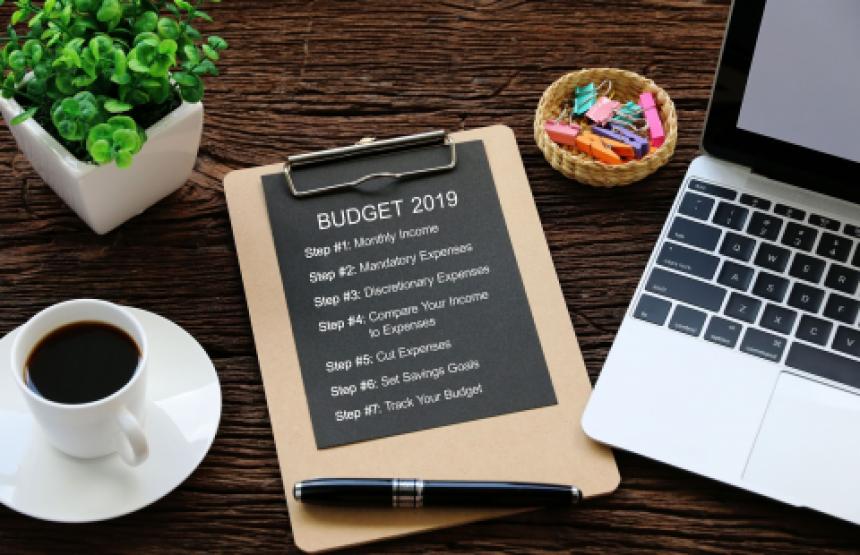
Everyone wants to live a happy and comfortable life free from financial stress. But, no matter what your financial or lifestyle goals may be, everything begins and ends with a realistic budget. While some people don’t like the thought of having to “live within a budget,” the reality is it simply is a tool to help you live within your means and achieve the financial goals you’ve established.
Follow these seven steps to help create a realistic budget that could get you where you want to go:
Step #1: Monthly Income
How much money do you bring in each month? If you have a job where you bring in steady pay every month, multiply your monthly net income by 12. If you’re self-employed, add your net earnings from the prior year and divide that amount by 12. Be sure also to include any other “irregular” income you receive, such as commission, dividends, rental income, bonuses, etc.
Step #2: Mandatory Expenses
Take a look at your mandatory expenses, or those bills you must pay every month:
- Mortgage or rent
- Utilities
- Loan payments (auto loans, student loans, credit cards, personal loans)
- Insurance (auto, home, life)
- Healthcare costs (includes insurance if out-of-pocket)
- Groceries
- Gas and car maintenance
- Property tax
- Income tax
For any bill you pay annually, simply divide that amount by 12 to get your monthly amount. Or, you can attribute the entire amount to the month when you typically make the payment (e.g., December for property tax payment).
Step #3: Discretionary Expenses
During this step, you’ll list all the things you want to do throughout the year – entertainment, vacations, electronics, gifts, eating out, etc. A good way to find out what you’ve spent over the past year is to look at your debit and credit card statements. Add up the spending in these various categories (or those you create) and then divide that number by 12 to give you an average for your spending by month. The best way to manage this going forward is to download software or an app to help you track and categorize your spending on a regular basis. Some examples include BudgetWi$e, Quicken and Mint.
Step #4: Compare Your Income to Expenses
Subtract your total expenses from your total net income. If you spend more than you earn, you need to make some adjustments. If you spend less than you earn, you’re in a good place – you’ll just need to make some minor tweaks to help meet the financial goals you establish.
Step #5: Cut Expenses
If you spend more than you earn, you’ll need to make some cuts. Start with your discretionary expenses, as those are easier to adjust. Maybe eat dinner at home instead of going out to eat. Or, use a streaming service instead of cable. And, take a look at mandatory expenses as well – you could save money by doing so. For example, you may be able to negotiate lower premiums for different insurance policies you have.
Step #6: Set Savings Goals
After you’ve cut expenses, you’re ready to set your short-term, mid-term and long-term financial goals. Here are a few examples in each category:
- Short-term Goals: an emergency cash fund, summer vacation
- Mid-term Goals: a college fund, wedding fund
- Long-term Goals: retirement, pay off your mortgage loan
Typically, you’ll need to put more savings toward shorter-term goals because you’ll need to build up savings quicker. A trusted financial advisor can assist you in setting up a savings strategy that could help meet your financial goals. If you do not have a trusted financial advisor, visit one of our BancorpSouth locations to get started.
Step #7: Track Your Budget
Every month you should compare your budget with your net income and expenses. Take the time to analyze where you’ve fallen short or saved more than anticipated – and why. Then, adjust your budget accordingly. A great way to keep track of your budget is to use online or mobile apps (such as the ones previously suggested). Using these tools, you’ll be able to view monthly financial reports and make better-informed decisions.
Creating a budget is not usually a fun task – and for most people, it requires a lot of patience and hard work. But, it might be the best way to help you live within your means today, so you can do the things you want to do tomorrow.
© BancorpSouth 2019

